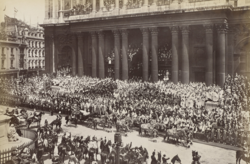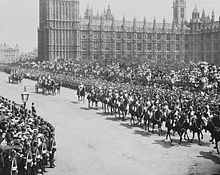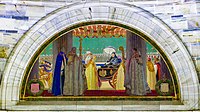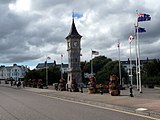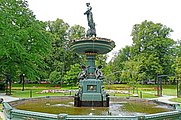Princess Victoria or Viktoria may refer to:

Princess Helena Victoria of Schleswig-Holstein was a granddaughter of Queen Victoria of the United Kingdom. From 1917 her name was simply Princess Helena Victoria.
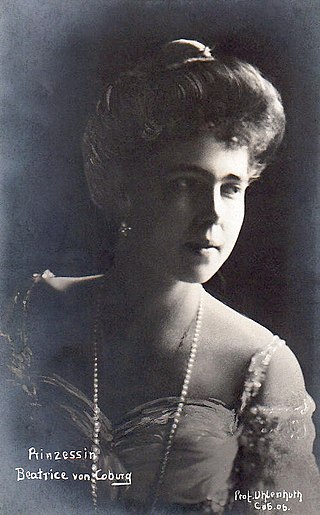
Princess Beatrice of Saxe-Coburg and Gotha was a member of the British royal family, a male-line granddaughter of Queen Victoria. She later married into the Spanish royal family, and was the wife of Prince Alfonso de Orleans y Borbón, Infante of Spain, a first cousin of Alfonso XIII of Spain.
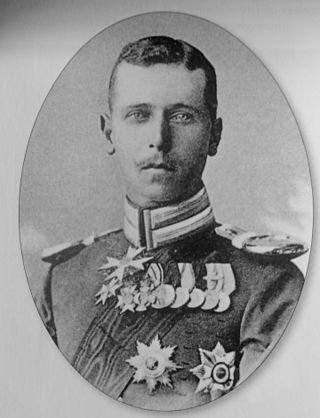
Alfred, Hereditary Prince of Saxe-Coburg and Gotha, KG,, was the son and heir apparent of Alfred, Duke of Saxe-Coburg and Gotha. He died aged 24 under circumstances still not entirely clear. He was a first cousin of Kaiser Wilhelm II of Germany, King George V of the United Kingdom and Tsar Nicholas II of Russia.
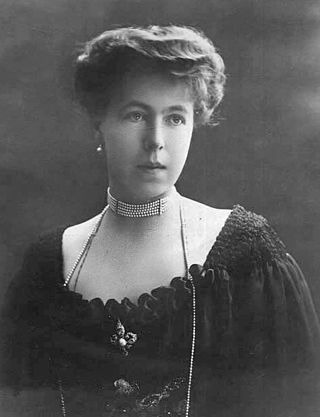
Princess Alexandra of Saxe-Coburg and Gotha was the fourth child and third daughter of Alfred, Duke of Saxe-Coburg and Gotha, and Grand Duchess Maria Alexandrovna of Russia. As the wife of Ernst II, she was Princess consort of Hohenlohe-Langenburg. She was a granddaughter of both Queen Victoria of the United Kingdom and Tsar Alexander II of Russia.
Princess Beatrice is the daughter of Prince Andrew, Duke of York, and granddaughter of Queen Elizabeth II.

Hohenlohe-Langenburg was a German county and later principality in the Holy Roman Empire. It was located in the current northeastern Baden-Württemberg, Germany, around Langenburg. Since the medieval times this small state was ruled by the House of Hohenlohe, counts and since 1764 ruling Princes of the Holy Roman Empire, until 1806. The princely House of Hohenlohe-Langenburg still owns and lives in Langenburg Castle today.

Princess Sibylla of Saxe-Coburg and Gotha was a member of the Swedish royal family and the mother of the current king of Sweden, Carl XVI Gustaf.
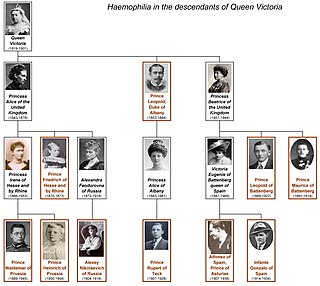
Haemophilia figured prominently in the history of European royalty in the 19th and 20th centuries. Queen Victoria and her husband, Prince Albert, of the United Kingdom, through two of their five daughters – Princess Alice and Princess Beatrice – passed the mutation to various royal houses across the continent, including the royal families of Spain, Germany, and Russia. Victoria's youngest son, Prince Leopold, Duke of Albany, also had the disease, though none of her three elder sons did. Tests on the remains of the Romanov imperial family show that the specific form of haemophilia passed down by Queen Victoria was probably the relatively rare haemophilia B. The presence of haemophilia B within the European royal families was well-known, with the condition once popularly known as "the royal disease".
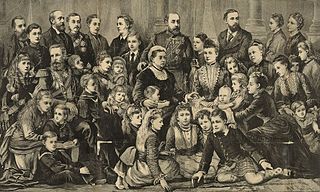
Queen Victoria, the British monarch from 1837 to 1901, and Prince Albert had 9 children, 42 grandchildren, and 87 great-grandchildren. Victoria was called the "grandmother of Europe".
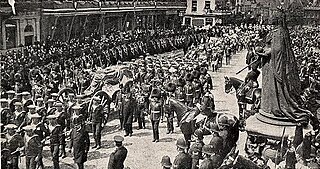
Edward VII, King of the United Kingdom of Great Britain and Ireland and Emperor of India, died on Friday, 6 May 1910 at the age of 68. His state funeral occurred two weeks later, on 20 May 1910. He was succeeded by his eldest living son, George V.

The Golden Jubilee of Queen Victoria was celebrated on 20 and 21 June 1887 to mark the 50th anniversary of Queen Victoria's accession on 20 June 1837. It was celebrated with a Thanksgiving Service at Westminster Abbey, and a banquet to which 50 European kings and princes were invited.

On 6 July 1893, Prince George, Duke of York, and Princess Victoria Mary of Teck were married at the Chapel Royal, St. James's Palace, in London, England.
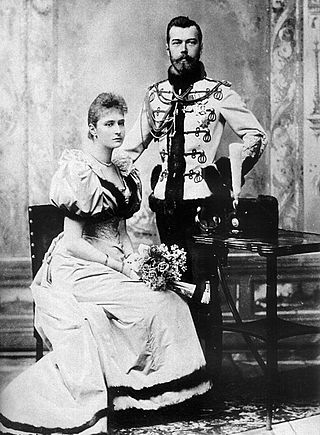
The wedding of Nicholas II of Russia to Alexandra Feodorovna occurred on 26 November [O.S. 14 November] 1894 at the Grand Church of the Winter Palace.
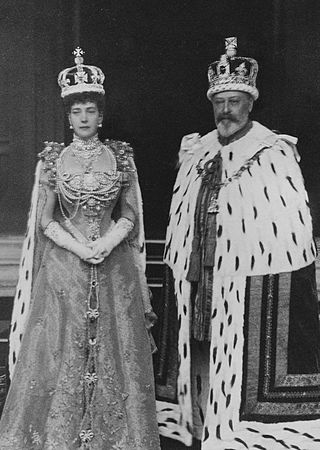
The coronation of Edward VII and his wife, Alexandra, as king and queen of the United Kingdom and the British Dominions took place at Westminster Abbey, London, on 9 August 1902. Originally scheduled for 26 June of that year, the ceremony had been postponed at very short notice, because the King had been taken ill with an abdominal abscess that required immediate surgery. In contrast to the coronation of Queen Victoria, Edward's predecessor, some 64 years earlier, Edward and Alexandra's coronation had been carefully planned as a spectacle reflecting the influence and culture of the British Empire, then at the height of its power, but also as a meaningful religious occasion.

Victoria, Queen of the United Kingdom of Great Britain and Ireland and Empress of India, died on 22 January 1901 at Osborne House on the Isle of Wight, at the age of 81. At the time of her death, she was the longest-reigning monarch in British history. Her state funeral took place on 2 February 1901, being one of the largest gatherings of European royalty.

The coronation of George V and his wife, Mary, as king and queen of the United Kingdom and the British Dominions took place at Westminster Abbey, London, on Thursday 22 June 1911. This was the second of four such events held during the 20th century and the last to be attended by royal representatives of the great continental European empires.
The Devonshire House Ball or the Devonshire House Fancy Dress Ball was an elaborate fancy dress ball, hosted by the Duke and Duchess of Devonshire, held on 2 July 1897 at Devonshire House in Piccadilly to celebrate the Diamond Jubilee of Queen Victoria. Due to the many prominent royals, aristocrats, and society figures who attended as well as the overall lavishness of the ball, it was considered the event of the 1897 London Season.
The wedding of Alfonso XIII, King of Spain, and Princess Victoria Eugenie of Battenberg took place on Thursday, 31 May 1906, at the Church of Saint Jerome the Royal in Madrid, Spain.

The wedding of Prince Gustaf Adolf of Sweden, Duke of Scania, and Princess Margaret of Connaught was held on Thursday, 15 June 1905, at St George's Chapel, Windsor Castle.
